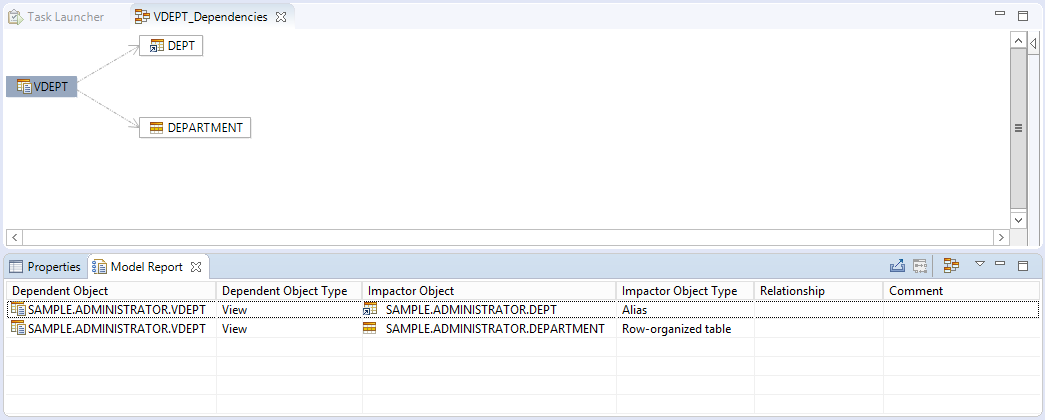

Returns the first day of the next quarter after the specified date.

Returns the first day of the next month after the specified date. Returns a datetime value that represents the first weekday, named by string-expression, that is later than the date inexpression. Returns an estimate of the number of months between expression1 and expression2. Returns a character string containing the name of the month (for example, January) for the month portion of expression, based on locale-name or the value of the special register CURRENT LOCALE LC_TIME.
DB2 DATA STUDIO TUTORIAL FULL
Returns the number of full minutes between the specified arguments. Returns an integer value representing the number of seconds between midnight and a specified time value.

Returns a datetime value that represents the last day of the month of the argument. Returns an integer value representing the number of days from JanuB.C. Returns the number of full hours between the specified arguments. Returns a TIMESTAMP that is converted from Coordinated Universal Time to the timezone that is specified by the timezone string. Returns a date or timestamp that represents the first day of the month of the argument. Returns a portion of a date or timestamp based on the arguments. Returns the number of days to the end of the month. Returns the number of full days between the specified arguments.

Returns an integer representation of a date. Returns the day of the year from a value. Returns the day of the week from a value, where 1 is Monday and 7 is Sunday. The integer value is in the range 1-7, where 1 represents the first day of the week, as specified in the second argument. Returns the day of the week in the first argument as an integer value. Returns an integer between 1 and 31 that represents the day of the month. Returns a character string containing the name of the day (for example, Friday) for the day portion of expression, based on locale-name or the value of the special register CURRENT LOCALE LC_TIME. Returns a timestamp expression rounded to the specified unit. Returns portion of a datetime based on its argument. Returns a numeric value that specifies the number of full years, full months, and full days between the current timestamp and the argument.
DB2 DATA STUDIO TUTORIAL PLUS
Returns a datetime value that represents the first argument plus a specified number of years. Returns a timestamp value that represents the first argument plus a specified number of seconds and fractional seconds. Returns a datetime value that represents expression plus a specified number of months. Returns a timestamp value that represents the first argument plus a specified number of minutes. Returns a timestamp value that represents the first argument plus a specified number of hours. Returns a datetime value that represents the first argument plus a specified number of days. With just a few clicks, Stitch starts extracting your Db2 data, structuring it in a way that's optimized for analysis, and inserting that data into a data warehouse that can be easily accessed and analyzed by Google Data Studio.This section introduces you to some common Db2 date functions that help you manipulate date and time data effectively. Products like Stitch were built to move data automatically, making it easy to integrate Db2 with Google Data Studio. You can find instructions for doing these extractions for leading warehouses on our sister sites Db2 to Redshift, Db2 to BigQuery, Db2 to Azure Synapse Analytics, Db2 to PostgreSQL, Db2 to Panoply, and Db2 to Snowflake.Įasier yet, however, is using a solution that does all that work for you. From Db2 to your data warehouse: An easier solutionĪs mentioned earlier, the best practice for analyzing Db2 data in Google Data Studio is to store that data inside a data warehousing platform alongside data from your other databases and third-party sources. When you've built in this functionality, you can set up your script as a cron job or continuous loop to get new data as it appears in Db2. Auto-incrementing fields such as updated_at or created_at work best for this. Instead, you can identify some key fields that your script can use to bookmark its progression through the data, and pick up where it left off as it looks for updated data. That process would be painfully slow if latency is important to you, it's not a viable option. How do you load new or updated data? It's not a good idea to replicate all of your data each time you have updated records. That should satisfy all your data needs for Db2 – right? Not yet. So you've written a script to export data from Db2 and load it into your data warehouse.


 0 kommentar(er)
0 kommentar(er)
